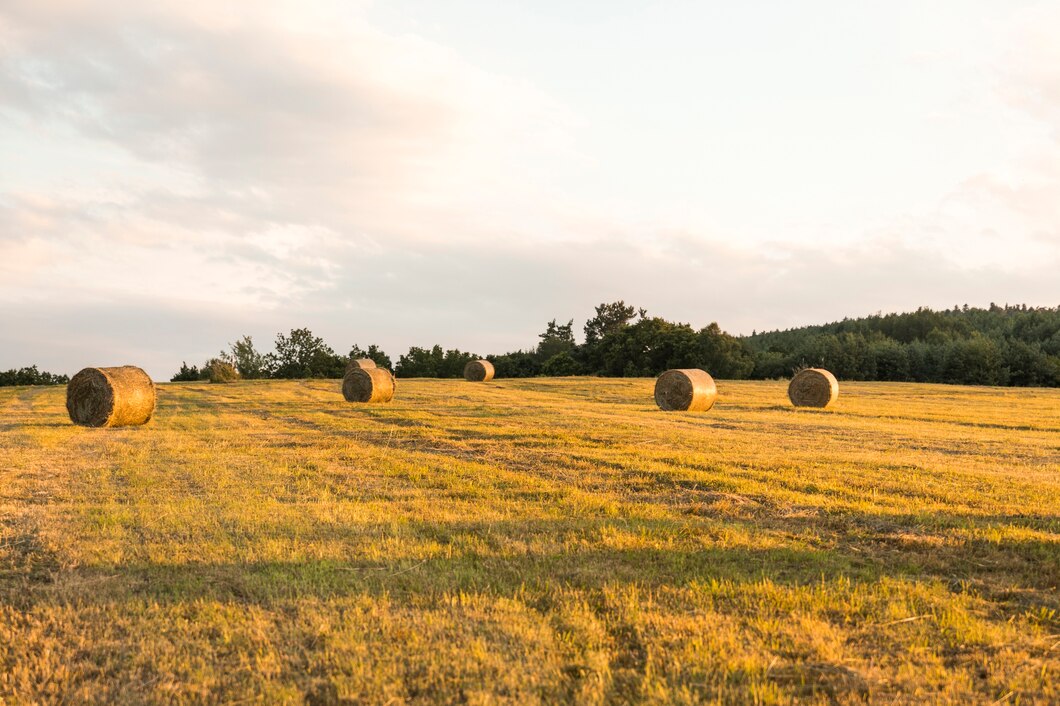
Investing in Farmland: A Hidden Wealth-Building Strategy
Investors seek new ways to grow their wealth, and farmland is popular. A rising global population and higher food demand make farmland investments appealing. They can provide financial returns and act as a hedge against inflation. So, why should you invest in farmland? What are the best agriculture investments today? This guide, aimed at a UK audience, will cover the benefits, challenges, and strategies for adding farmland to your investment portfolio.

Understanding Farmland as an Investment
What is Farmland Investment?
Farmland investment means buying agricultural land to earn returns through crops, leasing, or value increase. Unlike more volatile assets, farmland is a stable investment with real value.
- Tangible Asset: Farmland is a physical asset that provides income and long-term value.
- Steady Returns: Crop yields and land appreciation can lead to consistent returns.
- Diversification: Adding farmland helps reduce risks tied to traditional investments.
Why Invest in Farmland?
Understanding why to invest in farmland helps highlight its value:
- Inflation Hedge: Farmland and crop prices often rise with inflation, protecting purchasing power.
- Food Security: Agricultural land is essential for a growing global population.
- Capital Preservation: Farmland generally has less volatility than stocks and bonds.
- Sustainable Returns: Many investors seek both steady income and long-term gains.
These reasons make farmland investment opportunities an appealing way to build wealth alongside traditional assets.
Exploring Farmland Investment Opportunities
1. Direct Farmland Ownership
Buying farmland outright is a straightforward approach. This option gives direct access to agricultural assets and benefits from yield and land appreciation.
Key Considerations:
- Location: Farmland value depends on its location. Seek land in regions with strong agricultural potential.
- Farm Management: Decide if you’ll manage or lease the farm.
- Regulatory Environment: Learn about local zoning laws and tax implications in the UK.
Direct ownership suits those who prefer active involvement in their investments.
2. Farmland Investment Trusts (FITs) and Funds
Farm farmland investment trusts (FITs) and funds are great alternatives for those wanting agriculture exposure without direct ownership. They pool funds from multiple investors to buy and manage farmland.
Advantages:
- Diversification: FITs reduce risk by investing in a range of farmland assets.
- Professional Management: Experts handle daily operations and strategy.
- Liquidity: Shares in a FIT are easier to buy and sell than direct ownership.
Investing in FITs is smart for those seeking farmland investment opportunities without heavy management.
3. Agriculture-Related Stocks and ETFs
Another option is to invest in companies in the agriculture sector. This includes firms involved in agricultural technology, equipment, or food production. Agriculture-focused exchange-traded funds (ETFs) also provide sector exposure.
Benefits:
- Ease of Access: Stocks and ETFs trade easily on public markets, offering high liquidity.
- Diversification: ETFs give exposure to various agriculture-related assets, reducing single-stock risk.
- Growth Potential: Innovative agricultural companies may have strong growth prospects due to rising food demand.
This indirect route allows investors to benefit from agricultural growth without owning land directly.

Evaluating the Best Agriculture Investments
How to Determine the Best Investments
When looking for the best agriculture investments, consider these factors:
- Yield and Return: Check historical performance and expected yields from crops or land appreciation.
- Risk Profile: Assess the investment’s stability. Farmland typically has lower volatility, but each opportunity has unique risks.
- Market Trends: Stay updated on food demand, farming technology, and regulations that could impact profits.
- Sustainability: Look for investments emphasising sustainable practices, which are increasingly important to consumers.
Comparing Investment Options
- Direct Ownership vs. FITs: Direct ownership gives you control and may yield higher returns. However, it also presents operational challenges. FITs, on the other hand, offer professional management and greater diversification.
- Stocks and ETFs: These are more liquid and easier to trade but face market volatility and offer less direct farmland exposure.
Understanding why invest in farmland and evaluating options based on your risk tolerance and preferences will help you find the best agriculture investments for your portfolio.
Challenges and Risks of Farmland Investment
1. Market Volatility and Economic Factors
While farmland is usually less volatile, economic cycles can still affect it.
- Commodity Prices: Crop yields and land values can change with commodity prices.
- Economic Downturns: Global economic conditions might reduce demand for agricultural products.
- Currency Fluctuations: For international investors, exchange rates can impact returns.
2. Operational and Management Challenges
Direct ownership requires effective management. Challenges include:
- Farm Management: Good management is crucial for managing the land or hiring professionals.
- Environmental Factors: Weather, climate change, and regulations can impact yields and land use.
- Infrastructure Needs: You may need to invest in irrigation and storage to maximise returns.
3. Regulatory and Legal Considerations
Investors must navigate various regulations that can affect farmland investments:
- Zoning and Land Use: Local laws may limit agricultural expansion.
- Tax Implications: Understand how taxes affect farmland investments to maximise returns.
- Environmental Regulations: Compliance with ecological standards may require extra investment.
By recognising these challenges, you can prepare for risks and develop strategies to mitigate them, ensuring a resilient approach to farmland investment opportunities.

Strategies for Successful Farmland Investing
1. Conduct Thorough Due Diligence
Before investing, research the farmland’s soil quality, water availability, historical yields, and market conditions. Due diligence is crucial for understanding why to invest in farmland and finding the best agriculture investments.
- Site Analysis: Check the land’s physical attributes.
- Financial Projections: Review potential income from crops or leasing.
- Expert Consultation: Get advice from agricultural experts and financial advisors.
2. Diversify Your Investments
Diversification is key to sound investing. Spread investments across various farmland assets or combine farmland with other agriculture-related investments.
- Multiple Regions: Invest in farmland in different areas to reduce regional risks.
- Mixed Asset Portfolio: Pair farmland with stocks, ETFs, or other alternative agriculture investments.
3. Long-Term Perspective
Farmland investments often yield the best returns over time. A long-term approach helps you ride out volatility and benefit from gradual land value appreciation.
- Hold Period: Plan to hold farmland for several years for maximum returns.
- Reinvestment: Use income from farmland to invest in improvements or additional assets.
- Monitor Trends: Stay informed on agricultural market trends and adjust your strategy as necessary.
4. Leverage Professional Management
If managing farmland seems overwhelming, consider funds or trusts with professional management. This allows you to benefit from expert oversight without daily management hassles.
- Professional FITs: These trusts can manage operations, maintenance, and leasing.
- Advisory Services: Work with firms specialising in agricultural investments for tailored advice.
Final Verdict: Farmland Investment Worth it?
Farmland offers a unique and promising way to build wealth. It can hedge against inflation, provide stable returns, and meet the growing global food demand. So, farmland investment opportunities present a strong case for investors wanting to diversify.
When considering why to invest in farmland, think beyond just financial benefits. Owning productive land has real value. You can tap into farmland’s hidden potential by evaluating the best agriculture investments and understanding the risks. You can choose direct ownership, invest through funds, or mix in related assets. A well-researched, long-term approach is vital for success.
Begin your journey by doing thorough due diligence. Consult experts and develop a strategy that fits your financial goals. With a balanced and patient approach, farmland investing can offer financial security and the joy of supporting a key part of the global economy.
Explore the many farmland investment opportunities available. Discover why investing in farmland could be the strategic choice that enhances your investment portfolio. Happy investing, and may your path to wealth be as lasting as the land itself!


